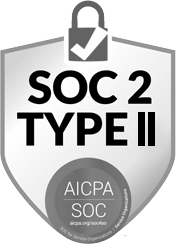Why Is This Important?
We’re all familiar with online map tools. When you’re in a new and unfamiliar area and need to find a place to stop for lunch, you can look it up online. The map tells you where you are, how far away the nearest restaurants are, and how to get there. It’s a part of our daily lives. But have you ever wondered how all of this works?
This Is Where Geocoding Comes In
Every point on Earth can be identified by a unique set of coordinates, or latitude and longitude. This is called a geocode. Geocodes are normally expressed as degrees of latitude and longitude. For example, the CN Tower in Toronto is located at coordinates 43.6426 latitude and -79.3871 longitude. At four decimal places, you can pinpoint a location at a precision of about 10 metres – exact enough to identify a specific building or property.
At first glance, this may seem like nothing more than an academic exercise, of interest to cartographers and high school math students, but useless for your business. After all, you can’t exactly send a flyer to a set of coordinates.
So What Can You Do With This Information?
Geocoding offers one clear advantage over street addresses: it makes it very easy to calculate distance. Once you know the latitude and longitude of any two points in the world, a simple mathematical formula will tell you how far apart they are. You don’t need to be familiar with the addressing system of the country these locations are in, or even to know the addresses at all – it’s just math, and it works anywhere.
Let’s say you’re the marketing director for a retail store with multiple franchises. You have a customer list and are planning a marketing campaign, but you need to direct people to their closest location. By appending geocodes to street addresses, contact data experts like our team at Cleanlist can calculate the distance between each customer and each location and direct them appropriately. You can personalize your communications with a map to the closest store, opening hours, or even special deals valid only at a particular location.
Geocoding is also useful if you’re looking for new prospective customers. If you want to find new customers, it makes sense to start looking for them in proximity to your location. With only postal addresses to go by, you would have to research the addresses and postal codes in the area – a time consuming activity, and not feasible if you’re responsible for a large number of stores. But with geocoding, it’s much easier. For example, Cleanlist’s proprietary ResponseCanada Consumer and ResponseCanada Business databases are fully geocoded with the latitude and longitude of each address. With this information, it’s easy to acquire a prospect list within a defined radius of your business’s location.
If you want to dig deeper, you can use geocodes as an important component in creating a customer profile and finding the best prospects for each of your locations. For example: do you really know how far your customers will travel to get to your store? Or are you just guessing? Given the uneven distribution of Canada’s population and the differences in transportation habits between urban and rural dwellers, you might be surprised at what you learn. A location in downtown Vancouver may attract people only within a kilometre or two – walking distance, or a quick bus ride. Meanwhile, customers might drive several kilometres to a suburban location, or even farther in a rural area where everything is a long way away. Once you know how far your customers will travel, you will have a better idea of how far from your location to start looking for new potential customers.
So don’t dismiss the power of geocoding data! Far from being boring and academic, geocoding is a powerful tool for learning more about your customers and finding new ones.
Ready To Learn More?
Our team of data experts at Cleanlist can help you unlock the potential of geocoding.
- Geocode Append: A part of Cleanlist’s Database Cleaning and Enrichment solution, Geocode Append will apply latitude and longitude to every address in your database. Different levels of precision are available, from an estimated geocode at the postal code level to precise coordinates at the rooftop level. Use it in conjunction with our other data enrichment solutions to keep you pointed in the right direction.
- B2C Prospecting / B2B Prospecting: Cleanlist’s proprietary ResponseCanada Consumer and ResponseCanada Business databases can help you to pinpoint new customers wherever you’re looking for them. Each address contains latitude and longitude data, which we can use to zero in on your best prospects within range of your location.




